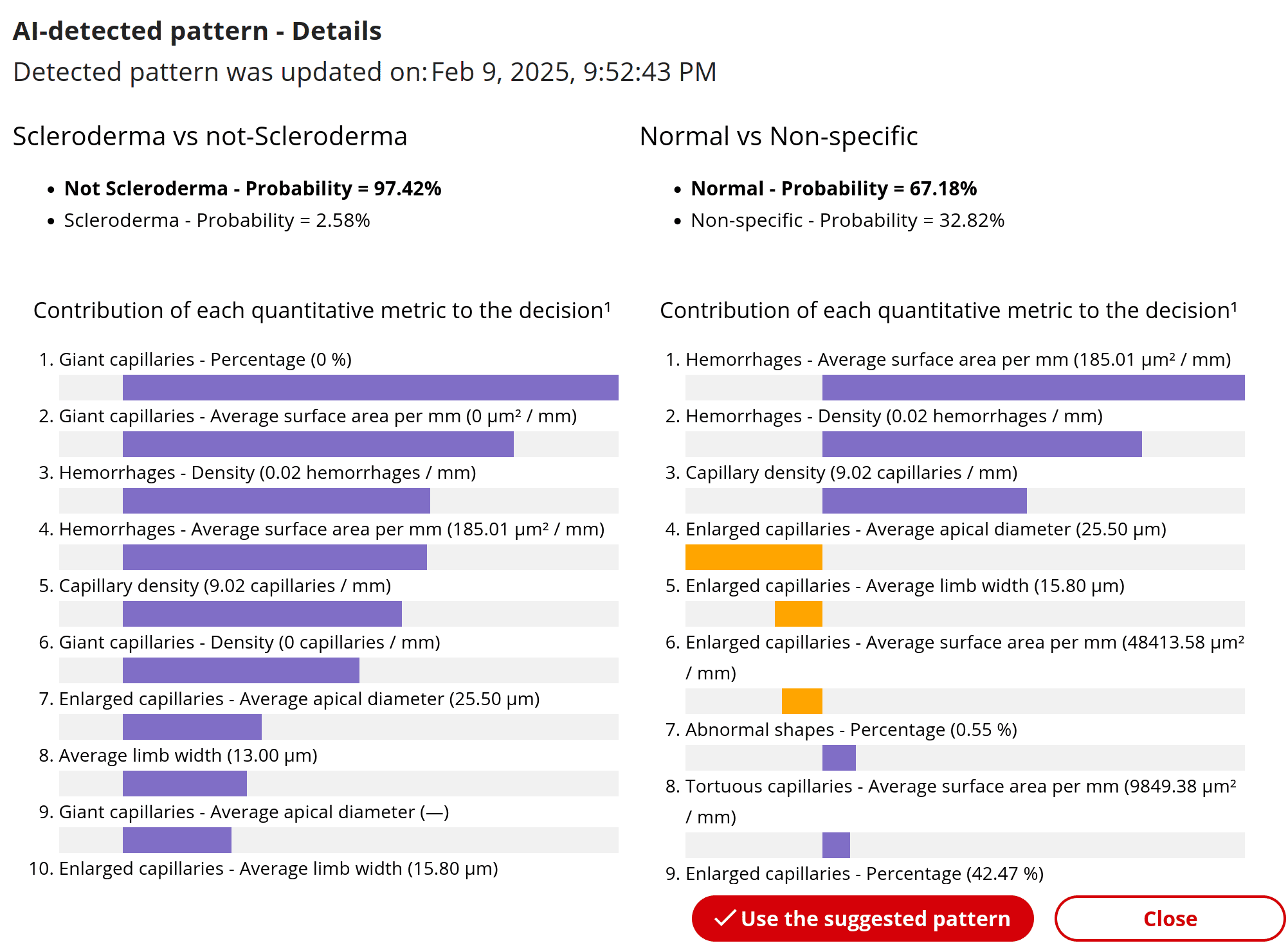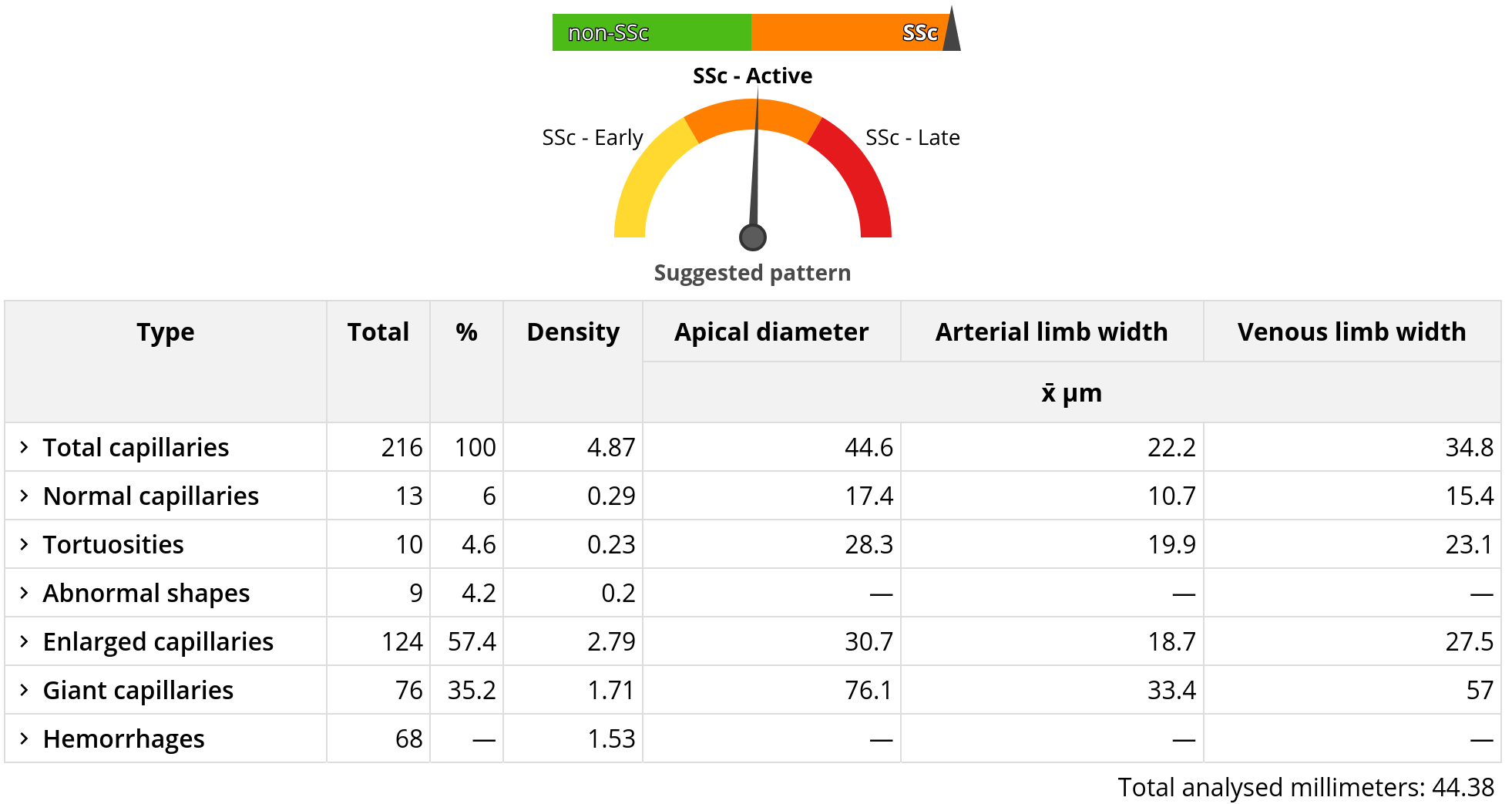Introduction
Nailfold videocapillaroscopy (NVC) is a crucial diagnostic technique used in rheumatology to assess microvascular abnormalities, particularly in systemic sclerosis (SSc) and Raynaud’s phenomenon. By analyzing capillary structures in the nailfold region, clinicians can identify disease patterns that help in early diagnosis and monitoring of autoimmune diseases.
However, traditional capillaroscopy is time-consuming and highly dependent on the examiner’s experience. To address these challenges, Capillary.io has integrated CAPI-Detect [Rheumatology (Oxford). 2025 Feb 7:keaf073], a state-of-the-art machine learning algorithm that enhances the accuracy and consistency of capillaroscopic analysis.
What is CAPI-Detect?
CAPI-Detect is an AI-powered algorithm developed to classify disease patterns in nailfold capillaroscopy images with a high degree of precision. Unlike manually designed algorithms, which rely on predefined rules, CAPI-Detect leverages machine learning models trained on thousands of capillaroscopies labeled by expert capillaroscopists. This ensures a more reliable and bias-free classification of disease patterns.
Key Features of CAPI-Detect
AI-Based Classification: Uses machine learning to analyze and categorize nailfold capillary patterns.
Enhanced Accuracy: Outperforms traditional algorithms by incorporating a larger set of quantitative variables.
Minimization of Examiner Bias: Standardizes analysis by removing subjective interpretation.
Automated Decision Support: Provides probability scores for each classification, indicating confidence levels in the model’s predictions.
Seamless Integration: Fully implemented within the Capillary.io platform, allowing researchers and clinicians to access advanced capillaroscopic analysis effortlessly.
How Does CAPI-Detect Work?
1. Image Acquisition
Nailfold capillaroscopy images are collected using high-resolution capillaroscopes and uploaded to the Capillary.io platform.
2. AI-Powered Analysis
CAPI-Detect processes these images, extracting 24 key capillary variables related to structure, shape, size, density, and hemorrhages. These variables are fed into a machine learning model trained on expert-annotated capillaroscopies.
3. Pattern Classification
The algorithm assigns each capillaroscopy to one of the following patterns:
Normal
Non-Specific
SSc-Early
SSc-Active
SSc-Late
This classification aligns with standardized rheumatology guidelines, ensuring clinically relevant and interpretable results.
4. Probability Scoring
Unlike conventional methods, CAPI-Detect does not provide a rigid classification but instead outputs probability scores for each pattern. This feature enhances decision-making by reflecting the model’s confidence level and allowing clinicians to consider borderline cases more carefully.

Why CAPI-Detect Transforms Capillaroscopy
Higher Accuracy in Disease Pattern Recognition
CAPI-Detect outperforms traditional classification methods, with accuracy scores exceeding 90% in full-consensus cases, according to the published validation study. The model’s ability to process and learn from thousands of expert-classified images allows it to detect nuances that manual interpretation might miss.
CAPI-Detect builds upon the foundation of CAPI-Score, improving its accuracy and robustness by leveraging machine learning techniques instead of predefined rules. While CAPI-Score classifies capillaroscopy images based on a limited set of rules and manual annotations, CAPI-Detect integrates a broader range of 24 quantitative variables derived from AI-based capillary analysis.
Increased Efficiency and Scalability
With the implementation of CAPI-Detect in Capillary.io, clinicians and researchers can analyze capillaroscopies in a fraction of the time required for manual classification. This efficiency is particularly valuable in clinical settings where rapid assessment is crucial.
Eliminating Subjective Interpretation
By relying on machine learning, CAPI-Detect minimizes inter-observer variability, ensuring that diagnoses are based on standardized, quantifiable data rather than individual experience levels.
Discovery of New Diagnostic Variables
The AI-driven approach has identified previously overlooked variables that play a significant role in disease classification. This opens the door for further research into novel biomarkers for autoimmune diseases.
CAPI-Detect on the Capillary.io Platform
CAPI-Detect is fully integrated into Capillary.io, making it accessible to clinicians and researchers worldwide. Users can:
Upload capillaroscopy images directly to the platform.
Receive AI-driven disease pattern classifications instantly.
Access detailed probability scores and capillary structure analysis.
Compare AI predictions with manual annotations for validation.
Want to know more about Capillary.io? Explore our website or signup here!
The Future of AI in Capillaroscopy
As artificial intelligence continues to evolve, CAPI-Detect represents a significant step toward fully automated, highly accurate capillaroscopic analysis. Future developments may include:
Expanded Dataset Training: Incorporating a larger and more diverse set of capillaroscopies to further refine model accuracy.
Predictive Analytics: Using AI to forecast disease progression based on capillaroscopic quantitative findings.
CAPI-Detect is transforming nailfold capillaroscopy by providing a powerful, AI-driven approach to disease pattern recognition. By eliminating examiner bias, improving accuracy, and increasing efficiency, it enables clinicians to make more informed, data-driven decisions. With its full implementation in the Capillary.io platform, CAPI-Detect is set to become a very useful tool for researchers and healthcare professionals in the field of autoimmune disease diagnosis and microvascular research.

